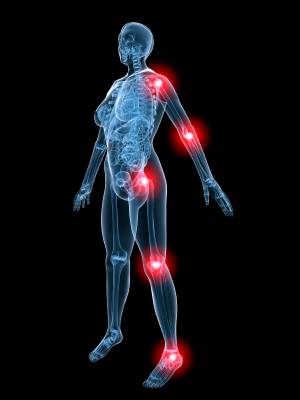The experimental setting of pain research studies may influence how fibromyalgia (FM) patients rate their pain, an interview-based study suggests.
The study, “Fibromyalgia patients and healthy volunteers express difficulties and variability in rating experimental pain: a qualitative study,” was published in the Scandinavian Journal of Pain.
Experimental pain research studies in humans have helped researchers understand the mechanisms behind chronic pain diseases, such as fibromyalgia. However, few studies have examined how participants score their pain during these experiments. Understanding this process will allow researchers to improve the set-up and design of their experiments.
In this study, researchers conducted interviews to capture the thought processes of participants while rating experimental pain. The study enrolled 31 fibromyalgia patients and 44 healthy volunteers who had just participated in an experiment examining the mechanisms of pain control in chronic pain. During the experiment, the participants had a thermode (hot bar) applied to their skin to induce painful heat stimuli.
Participants were asked to think back to when they were in the pain experiment and how they decided on their pain score. Those who found it difficult to decide on a pain score were asked to identify the reason why. Both the pain experiment and the interviews were performed at the National Institutes of Health.
When rating pain during the experiment, participants reported comparing it to previous pain, reflecting on their ability to endure pain, and focusing on their body’s physical reaction to the pain.
Additionally, participants were aware that the experimental setting was safe, and also focused on the pain scale as a guiding structure. They also noted the desire to appear strong in front of the study investigators.
Five factors were pinpointed as the main obstacles to rating experimental pain: falling asleep; mental fatigue; guessing/vacillating; the need to make a fast decision; and difficulty in maintaining consistency from sensation to sensation.
For example, one fibromyalgia patient said, “One thing I was concerned about is the time factor. Had I been given more time I would have given it a different score.”
Another patient described the difficulty of being consistent: “It was a challenge because memory is involved so you have to remember what you said for all the previous things to be consistent with the scale.”
Researchers identified several differences between fibromyalgia patients and healthy controls in how they rated their pain. Fibromyalgia patients used current daily pain as a point of reference to compare the pain experienced during the experiment. Mental fatigue was also more common in fibromyalgia patients.
Healthy controls, in contrast to fibromyalgia patients, were more concerned about appearing strong to the researchers conducting the experiment.
In general, the researchers found the participants used an array of strategies to rate their pain.
This study suggests that participants in experimental pain experiments are sometimes “distracted and influenced by the experimental setting,” and that “FM patients tend to compare their daily pain with the experimental heat pain and become mentally fatigued more easily than HVs [healthy volunteers],” the researchers wrote.
“Understanding the ways in which the experimental setting influences patient pain ratings may help pain researchers better design and interpret studies,” the study concluded.

